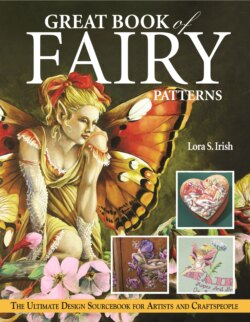Читать книгу Great Book of Fairy Patterns - Lora S. Irish - Страница 18
На сайте Литреса книга снята с продажи.
Оглавление10
G
REAT
B
OOK
OF
F
AIRY
P
ATTERNS
Every story agrees that Fairies are people of
the night. Coming out from their homes beside an
old tree, a small cave or a deeply cut riverbank,
the Fairies are active until the rising of the sun.
They are seldom seen during the daytime unless
they need to visit the marketplace. Here they go
about their business, dropping a few coins at the
bread maker’s table and taking the freshest of
loaves, with not a word said.
As Fairies do not seem to work at any occupa-
tion, neither tilling the land nor herding beasts, it
must be assumed that Fairy money is magical in its
origins. This assumption seems to hold true as one
story tells of a pocketful of silver Fairy coins that
a boy received from a Fairy in exchange for the
family’s prized cow. The coins then turned into a
handful of corn when brought home to his mother
and father.
Of note in trying to describe Fairies, it is
agreed that Fairies hate lying and sworn oaths of
any kind. One man lied to a Fairy and incurred
such wrath that the Fairy folk tormented not only
him but also his offspring for many generations
hence. For a Fairy to take an oath was considered
foolishness as it bound the Fairy to one place and
one person, contrary to his free-spirited nature.
However, Fairies always seemed to bind humans
to contracts in exchange for little magical gifts. If
you broke the contract, even by an accident that
you did not cause, the gift and all that it had
touched or affected would disappear.
The status of Fairies ranges from the very
poorest, who appears as a goose herder in an early
version of the Cinderella story called Tattercoat,
to the beautiful kings and queens that reside in
lavish palace caves. Yet whether beggars or
princes, Fairies love to dance. Late in the evening
the music from the Fairy ring can be heard as
these little people dance for hours around their
favorite oak, yew or sycamore tree, but never a
rowan tree, for this was said to bring harm to the
Wee Folk.
Laundry Line Gossip,
pattern on page 164
© Lora S. Irish
